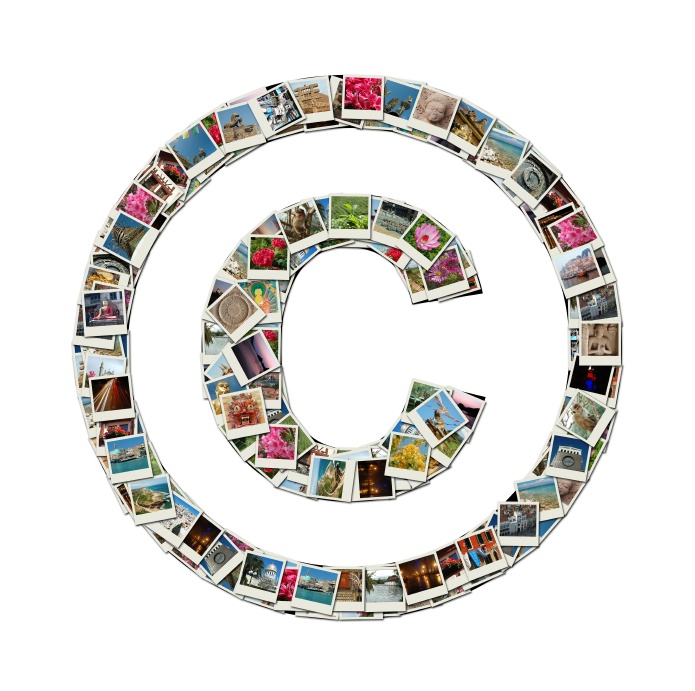By Patricia WS Douglas on using images in blog posts.
We are writers here at Verblio (formerly BlogMutt). We provide writing tips to our clients, other writers, and especially bloggers. We are not lawyers and we do not give legal advice. If you have questions about photos posted on your blog or website, please consult legal counsel for guidance about copyright infringement.
Images in Blog Posts
That disclaimer aside, we wanted to share a few thoughts on using images in blog posts and why you can’t just pull from Google. One question that comes up is whether pictures found on services like Google, Facebook, or Pinterest come under “fair use” rules. You may also wonder whether “giving credit” is a reasonable path to avoid copyright infringement. Let’s look at each of the arguments.
The law describes the “fair use” doctrine in Section 107 of the Copyright Act as:
“The fair use of a copyrighted work, including such use by reproduction in copies…for purposes such as criticism, comment, news reporting, teaching (including multiple copies for classroom use), scholarship, or research…”
If you use a photo for one of these purposes, this language seems to say it is not copyright infringement. An example might be copying a photo of a product from the manufacturer’s website to use in a review of that product for consumers. However, remember that it is a legal question for the courts to decide whether using a copy of a photo comes under the “fair use” doctrine. The “fair use” doctrine excludes using someone else’s photo for profit. If you put someone else’s photo without permission on your company’s blog, most courts would say that such use is “for profit” even if you directly earned no money from the use. In that case, “fair use” will not save you from a lawsuit.
Even if you give credit…
“Giving credit” doesn’t even rise to the level of a legal doctrine because there’s no legislative underpinning here. Beware! “Giving credit” is not enough to save you from a lawsuit. You can give all the credit you want to someone, but if you did not have their permission to use the photo, you expose yourself to liability for copyright infringement.
As writers, we understand that a sure way to “pop” a post in your blog or an article on your website is with pictures. We know this because our brains respond to colorful pictures and the emotions they evoke. We also know this because, as a society, sharing pictures on social media has become one of our favorite ways to communicate.
So, here’s the first takeaway from this post. Stop and think before you copy anyone else’s photo for your own use. Remind yourself that all pictures enjoy copyright protection by default. No one has to file special papers to get a copyright. The copyright attaches as soon as the artist creates the intellectual property. Remember, too, that interpreting a complicated law is difficult. You always risk a copyright infringement claim if you do not get permission from the owner before you use a photo.
Get permission first!
So, how difficult is it to get permission? Sometimes it is as easy as emailing to ask to use the photo. Other times owners want compensation. Think of the ask for permission as a sign of respect for a fellow creator’s intellectual property. You would not want the world to freely use a product or intellectual property that you created and intended to sell. The same holds true for photographers and their photos. We all want respect for our creative work.
And that brings me to the second takeaway from this post. There are additional ways that you can use someone else’s images in your work with permission.
Using Images in Blog Posts (Legally)
- Search Google for photos that the owner has designated as “free to use or share”. Flickr has a similar advanced search function. Follow the rules regarding photo credit if required.
- Stock photos. Yes, sometimes they are cheesy, but you can generally find what you need for just a few dollars for one photo. You can also join some of the services for a year’s subscription and have access year-long to stock photos. Which avenue you pursue will depend on how often you need them.
- Use public domain libraries. These are great. You can find photos of almost anything you seek, often professional grade. For example, government employees from fish and wildlife agencies sometimes post candid wildlife photos that are simply beautiful. The public domain access has quality photography that confers rights to the public to use for any purpose.
- Take your own photos! I wrote blogs and articles for a small website. I started out using stock photos and then public domain libraries. When I started taking my own shots, though, I started to have fun. I am not a professional photographer; yet, I knew that the photos I took were unique and related to the organization for which I worked. I sometimes captured them for specific purposes, like recording a special event. More often than not, I snapped the shot just because I thought it would fit the subject of a future article. Taking photos became part of my creative expression. I can’t even draw a stick figure, but I can point and click my smartphone with good results. The experience still makes me smile.
If you want to read one blogger’s unfortunate experience in copyright infringement territory, read Roni Loren’s personal account, entitled “Blogger Beware: You CAN Get Sued For Using Photos You Don’t Own on Your Blog”.
So, here’s your final (and most important) takeaway: do not play copyright infringement roulette. Do not chance that you interpreted this complex law in the right way for your particular photo use. Using images without permission is especially foolish because there are easy ways to use them with the owner’s permission. Doing otherwise can cost you.
Need images in your posts, but don’t have time to make sure you’re not using anything that will get you in trouble? Verblio’s Picture It! the add-on may be for you.




